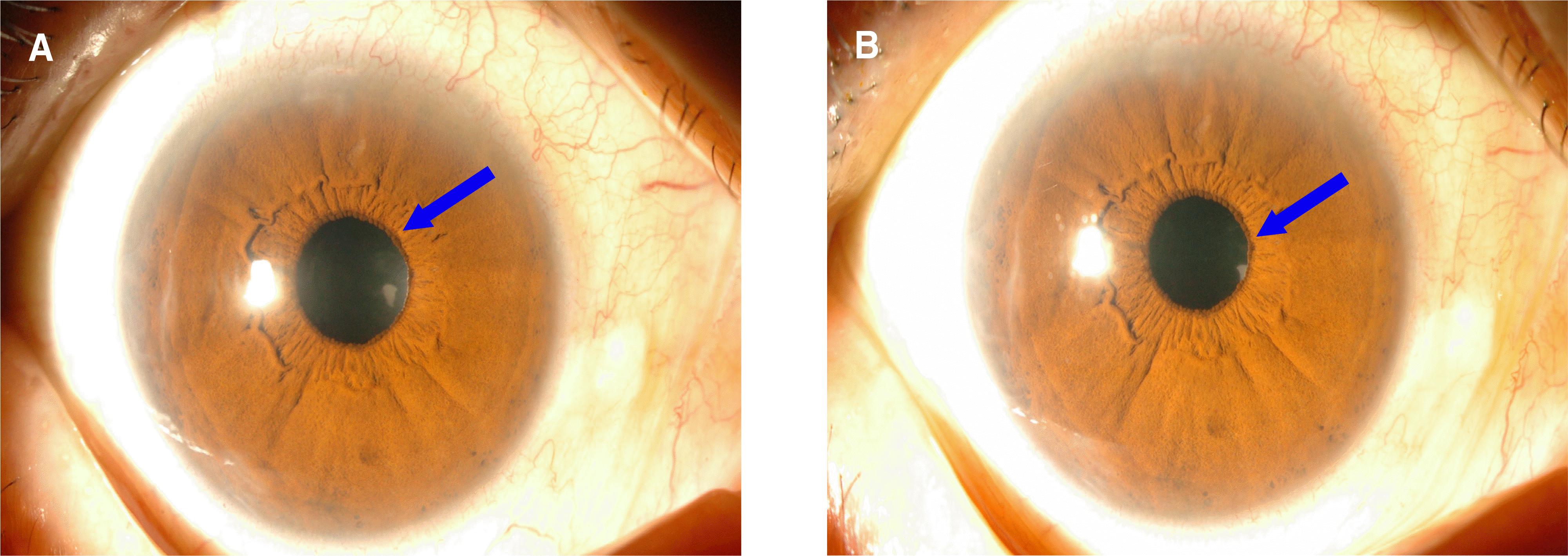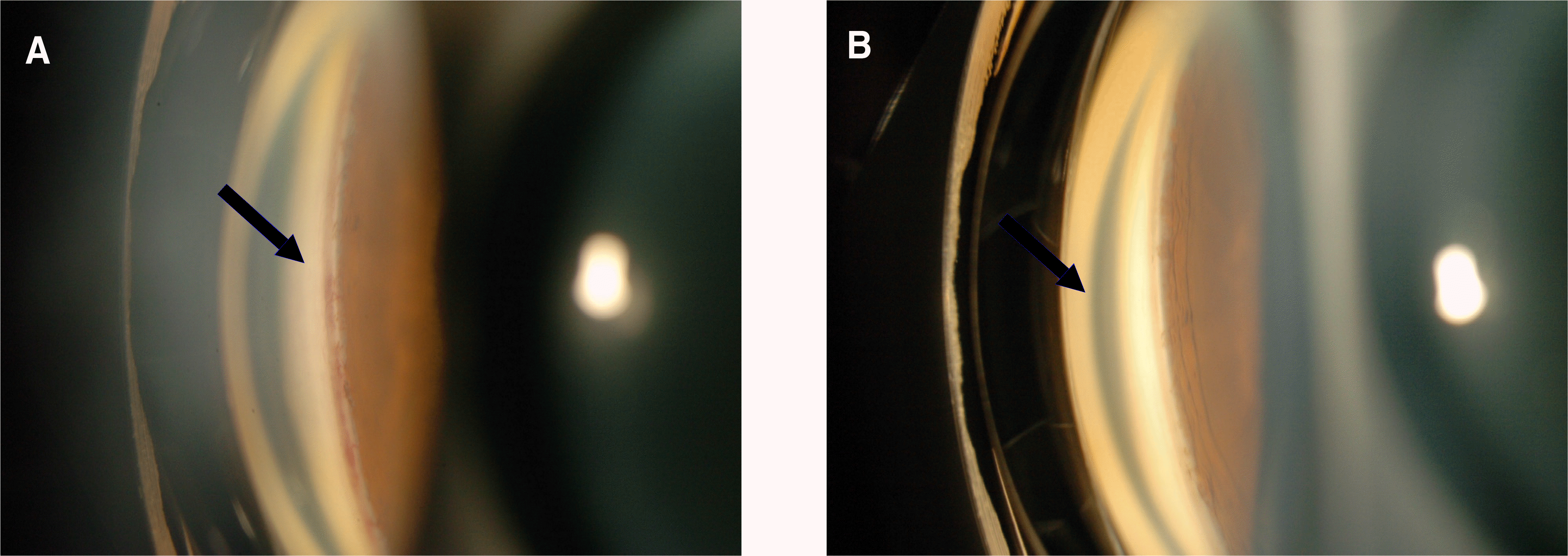Abstract
Purpose
This case is conducted to assess the short‐ term safety and efficacy of intravitreal bevacizumab injection in patient with early‐ stage of the neovascular glaucoma (NVG) without peripheral anterior synechiae.
Case summary
A 66‐ year‐ old patient with a history of proliferative diabetic retinopathy presented with neovascularization of the iris and the angle and high intraocular pressure of 30 mmHg. The patient received a single injection of bevacizumab (1.25 mg /0.05 mg) intravitreally. The visual acuity (VA), intraocular pressure (IOP), regression of the iris and the angle neovascularization were measured up to the twenty ninth week after injection. Regression of the iris and angle neovascularization were confirmed from the second week after injection. The visual acuity had continued stable and the IOP had been controlled from 30 mmHg to 20 mmHg from fifth week without the need for topical antiglaucoma medications until the twenty ninth week.
References
1. Brown GC, Magargal LE, Schachat A, Shah H. Neovascular glaucoma. Etiologic considerations. Ophthalmology. 1984; 91:315–20.
2. Loffler KU. Neovascular glaucoma: aetiology, pathogenesis and treatment. Ophthalmologe. 2006; 103:1057–63.
3. Kahook MY, Schuman JS, Noecker RJ. Intravitreal bevacizumab in a patient with neovascular glaucoma. Ophthalmic Surg Lasers Imaging. 2006; 37:144–6.

4. Iliev ME, Domig D, Wolf-Schnurrbursch U, et al. Intravitreal bevacizumab (Avastin) in the treatment of neovascular glaucoma. Am J Ophthalmol. 2006; 142:1054–6.

5. Sivak-Callcott JA, O'Day DM, Gass JD, Tsai JC. Evidence-based recommendations for the diagnosis and treatment of neovascular glaucoma. Ophthalmology. 2001; 108:1767–79.
6. Lee KW. Management of Neovascular glaucomas. J Korean Ophthalmol Soc. 1988; 29:596–603.
7. Magargal LE, Brown GC, Augsburger JJ, Donoso LA. Efficacy of panretinal photocoagulation in preventing neovascular glaucoma following ischemic central retinal vein obstruction. Ophthalmology. 1982; 89:780–4.

8. Duker JS, Brown GC. The efficacy of panretinal photocoagulation for neovascularization of the iris after central retinal artery obstruction. Ophthalmology. 1989; 96:92–5.

9. Brooks AM, Gillies WE. The development and management of neovascular glaucoma. Aust N Z J Ophthalmol. 1990; 18:179–85.
10. Avery RL, Pieramici DJ, Rabena MD, et al. Intravitreal bevacizumab (Avastin) for neovascular age‐ related macular degeneration. Ophthalmology. 2006; 113:363–72.
11. Silva Paula J, Jorge R, Alves Costa R, et al. Short-term results of intravitreal bevacizumab (Avastin) on anterior segment neovascularization in neovascular glaucoma. Acta Opthalmol Scand. 2006; 84:556–7.

12. Zweng HC, Little LH. Argon laser photocoagulation. St. Louis: The CV. Mosby;1977. p. 263–5.
Figure 1.
Clinical appearance of the iris before and after intravitreal injection of the bevacizumab (A) Before treatment: Neovascularization of the iris at the pupillary margin (B) One week after treatment: The neovascularization completely resolved and remained absent during the next twenty nine weeks.

Figure 2.
Gonioscopic examination before (A) and two weeks after (B) the intravitreal injection of the bevacizumab. Note the regression of the neovascularization in the angle.

Table 1.
Changes in the intraocular pressure, visual acuity and neovascularization of the iris and the angle after the intravitreal injection of the bevacizumab




 PDF
PDF ePub
ePub Citation
Citation Print
Print


 XML Download
XML Download